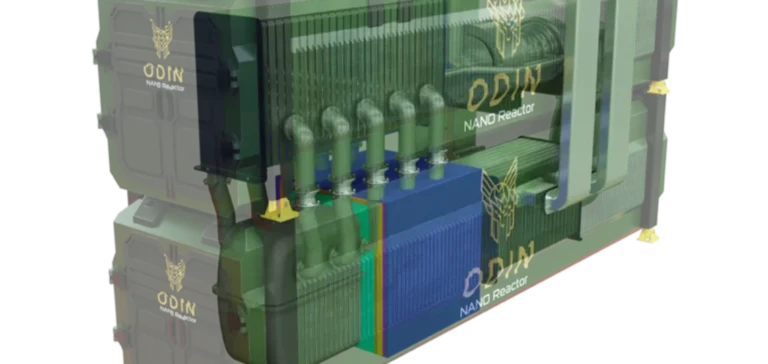NANO Nuclear Energy Inc. has signed a letter of intent to sell its ODIN™ low-pressure coolant microreactor technology to UK-based Cambridge Atom Works for a total of $6.2mn. The agreement includes a non-refundable $250,000 upfront payment, followed by a $5.95mn instalment due in 2026. Additional low single-digit royalties on net sales are also planned if the product reaches commercialisation.
A strategic shift in portfolio focus
The transaction marks a key step in NANO Nuclear’s strategy to streamline operations and concentrate on its gas-cooled modular microreactors. The company’s current portfolio includes the KRONOS MMR™, LOKI MMR™, and ZEUS™ technologies, acquired earlier this year. The move aims to optimise internal resources, simplify regulatory processes, and speed up market readiness of its most advanced solutions.
ODIN™ was initially developed by Cambridge Atom Works under a consulting agreement with NANO Nuclear. The full transfer of intellectual property reflects a logical continuation of that collaboration. The sale coincides with the recent launch of the Atlantic Partnership for Advanced Nuclear Energy between the United States and the United Kingdom, designed to align regulatory frameworks and shorten approval timelines for next-generation reactors.
KRONOS MMR™ takes centre stage
KRONOS MMR™, described as NANO Nuclear’s flagship technology, is a stationary high-modularity microreactor system capable of delivering up to 45 MWth in single-unit configuration, with gigawatt-scale potential in multi-unit setups. Its development is underway in the United States through a partnership with the University of Illinois at Urbana Champaign, where site preparations have already begun. A second development project is progressing in Ontario, Canada.
NANO Nuclear recently expanded its industrial capacity by acquiring an engineering and manufacturing facility in Oak Brook, Illinois. Strategically located in the centre of North America, the site will support construction, testing, regulatory certification, and commercial deployment of the company’s technologies across the North American market.
Strengthening transatlantic prospects
The alignment of NANO Nuclear’s portfolio with gas-cooled reactor technologies comes at a time when both US and UK governments are seeking to accelerate advanced nuclear development. The ODIN™ sale, combined with a focus on high-technology readiness programmes, is positioned as a lever for greater efficiency and growth, while retaining the possibility of future income from ODIN’s commercial use by Cambridge Atom Works.






















